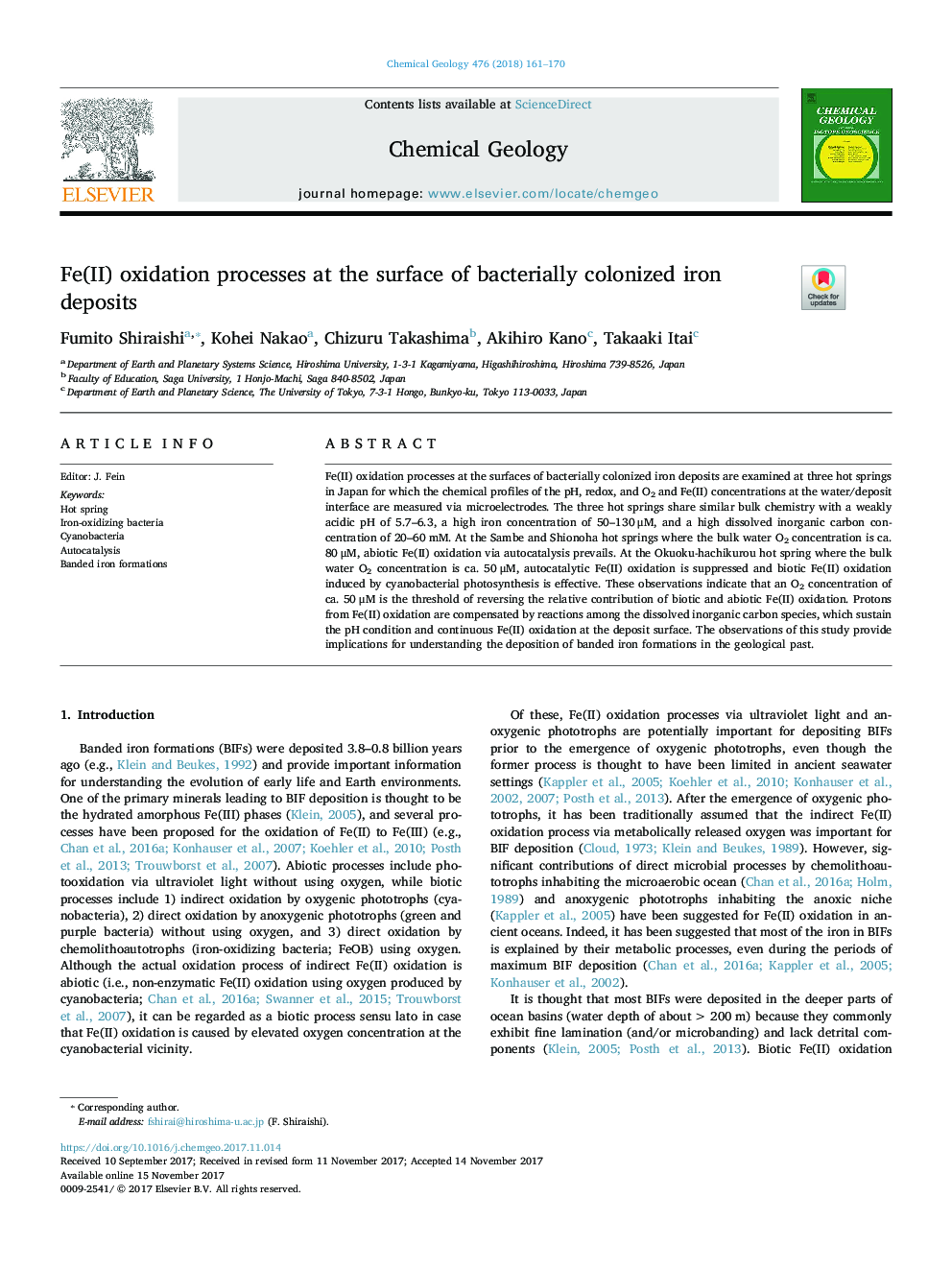| Article ID | Journal | Published Year | Pages | File Type |
|---|---|---|---|---|
| 8910454 | Chemical Geology | 2018 | 10 Pages |
Abstract
Fe(II) oxidation processes at the surfaces of bacterially colonized iron deposits are examined at three hot springs in Japan for which the chemical profiles of the pH, redox, and O2 and Fe(II) concentrations at the water/deposit interface are measured via microelectrodes. The three hot springs share similar bulk chemistry with a weakly acidic pH of 5.7-6.3, a high iron concentration of 50-130 μM, and a high dissolved inorganic carbon concentration of 20-60 mM. At the Sambe and Shionoha hot springs where the bulk water O2 concentration is ca. 80 μM, abiotic Fe(II) oxidation via autocatalysis prevails. At the Okuoku-hachikurou hot spring where the bulk water O2 concentration is ca. 50 μM, autocatalytic Fe(II) oxidation is suppressed and biotic Fe(II) oxidation induced by cyanobacterial photosynthesis is effective. These observations indicate that an O2 concentration of ca. 50 μM is the threshold of reversing the relative contribution of biotic and abiotic Fe(II) oxidation. Protons from Fe(II) oxidation are compensated by reactions among the dissolved inorganic carbon species, which sustain the pH condition and continuous Fe(II) oxidation at the deposit surface. The observations of this study provide implications for understanding the deposition of banded iron formations in the geological past.
Related Topics
Physical Sciences and Engineering
Earth and Planetary Sciences
Geochemistry and Petrology
Authors
Fumito Shiraishi, Kohei Nakao, Chizuru Takashima, Akihiro Kano, Takaaki Itai,
